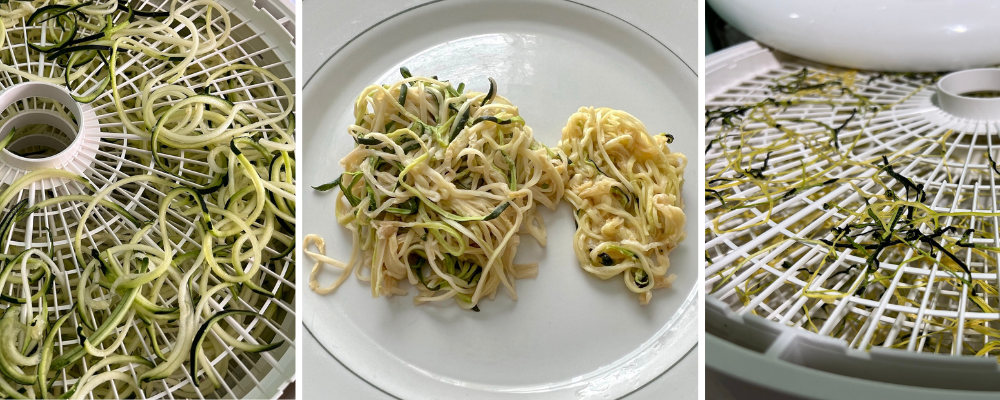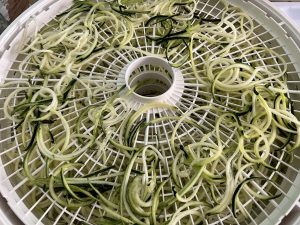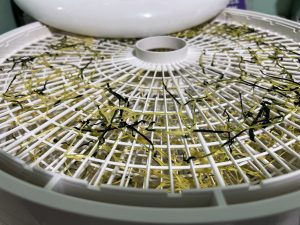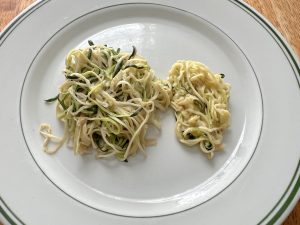
Dehydrating Zoodles – It’s Worth It!
— By Eva Holmes, Master Food Preserver Volunteer, University of Maine Cooperative Extension
Zoodles or zucchini noodles have become a popular pasta substitute for those looking to reduce carbohydrates or calories, but the real benefit is the fun way to increase vegetables in your diet. While it is possible to make fettuccine or sheet-style zoodles using just a knife, many, like me, use spiralizers to create zoodles with a square linguine sized shape.
I have a spiralizer. Maybe I’m just lazy, but it’s too much of a hassle to drag it out and clean it for just one meal and the zoodles don’t keep very long in the fridge. Frozen zoodles are too watery and mushy. I wondered, are dehydrated zoodles the answer? Here are the results of my experiments:
Drying
First I turned two zucchinis into a big pile of linguine-sized zoodles using my spiralizer, a kitchen gadget used to cut vegetables into noodle-like strips. These filled four dehydrating trays.

Lesson One: Don’t make too many zoodles at once because they take up a lot of room in the dehydrator.
Three trays dried in three hours at 135 degrees F. The bottom tray needed a little more time.
Lesson Two: Rotate your trays after 90 minutes.
Some of the zoodles stuck to the trays and it was tedious to remove them. This was especially noticeable on trays with thinly spread out zoodles.
Lesson Three: Make bigger piles, perhaps shaped as nests for easier use later. A fruit leather tray or parchment paper could help prevent the zoodles from sticking.

Rehydrating
I tried three methods for rehydration:
- Pre-soak in cold water for ten minutes.
- Bring water to a boil. Turn off the burner. Soak for 1-1/2 minutes.
- Add directly to sauce/dish.
Adding my dehydrated zoodles directly to the dish did not work out so well. I found that the zoodles never rehydrated and stuck together in an unappealing lump.

The noodles on the left were soaked in boiling water. The noodles on the right were soaked in cold water.
Both the cold water and boiling water soak produced fantastic results, perhaps better than fresh zoodles. The cold water soaked noodles were slightly crunchier and would go very well in a cold noodle sesame style dish. The noodles soaked in boiling water had a texture similar to pasta. Either option could be topped with a hot sauce.
Drying zoodles is a great way to use up excess zucchini and always have a pasta substitute on hand!
Resources
- How Do I . . . Dry? (National Center for Home Food Preservation)
